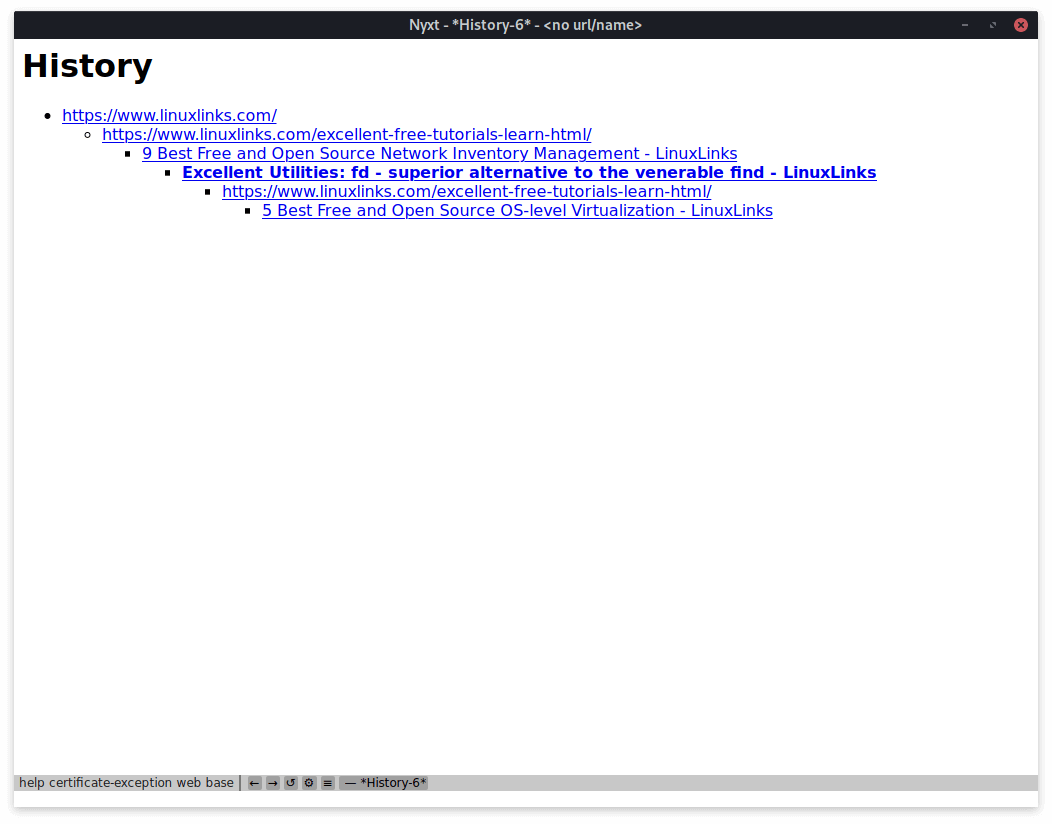Last Updated on August 11, 2021
In Operation

Here’s an image of Nyxt in action. You’ll notice the interface is very clean, with a very narrow status bar at the bottom of the window.
What helps distinguish Nyxt from other web browsers?
First, it offers the ability to switch between tabs using fuzzy searching which makes navigating websites faster. And even more useful is the ability to search multiple tabs simultaneously, and view the combined results in a single window. That’s actually quite powerful.
We also like the program accepts multiple inputs, which let you perform an operation against multiple objects.
There’s a buffed bookmark system with support for compound queries. Bookmarks can have tags, a shortcut string, a search-url and a timestamp. They can be stored and restored in a customizable format.

The program also provides powerful history functionality. History is displayed as a tree which you can transverse. Combined with smart navigation, it’s more accessible than other web browsers.
By default, the program uses the Common User Access (CUA) keybinding style. If that’s not to your liking, you can change the style to Emacs or vi keybindings from the help screen.
To render web pages Nyxt uses WebKit and WebEngine/Blink. WebKit is the web browser engine used by Safari whereas Blink is developed as part of the Chromium project.
The mainstream web browsers consume huge chunks of memory. For example, Google Chrome and Firefox use almost 1GB of RAM with only a single tab open. How does Nyxt fare in this department? With a like-for-like comparison, Nyxt uses about 800MB of RAM with a single tab open. That’s not a major saving compared to Chrome or Firefox. But remember we’re running a pre-release of Nyxt. When we tested the earlier 1.5.0 version, the memory footprint was lower.
Next page: Page 3 – Documentation
Pages in this article:
Page 1 – Introduction / Installation
Page 2 – In Operation
Page 3 – Documentation
Page 4 – Summary
